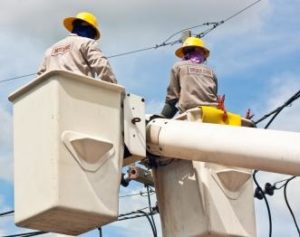
Last Wednesday, a nor’easter hit the east coast. It started with light snow and at first, I thought maybe the whole thing had been blown out of proportion by the weather channel. But by mid-afternoon, the flakes started getting bigger and the snow started to accumulate.
I’ve heard plenty of stories about New Canaan snow storms and the havoc they wreak with tree limbs falling on power lines. Still, I felt sure it wasn’t going to happen to us. But at 4:50 Wednesday afternoon, and smack in the middle of a client conversation, our power went out.
I went to find Greg (a seasoned veteran of New Canaan snow storms) and asked what was affected in our house when the power goes out. He said “the electricity.” (I knew this.) But then he added, “the water, the heat and the toilets.” Needless to say, this was not good news.
Fortunately, my laptop and portable hot spot were fully charged, so I emailed the handful of clients waiting to hear from me and finished up a little early.
Then, I began wondering:
- How long will the charge on my laptop and portable hot spot last?
- Could I work at the library using their Wi-Fi and electricity (will they be open?)
- If the outage lasts a long time, will it be worth it to find a place to set up my desktop (with my larger screens)
- How much does a generator cost?
I realized I was so happy that everything I need is in the cloud (Gmail, Dropbox, Evernote, Google Calendar, my CRM, project management software and time tracking).
How about you? What would you do – and how could you make things easier – if the power were out (for days?) at your house or office?
Granted, there comes a time when we just need to surrender to Mother Nature and sit by the fire until something like a power outage passes. But, if you have real deadlines and clients you don’t want to disappoint, it’s a good idea to give this some thought beforehand.
We were lucky. Things snapped back on less than an hour later and I was back up and running at full power! (But I’m still glad to know I have a pretty solid back up plan.)
